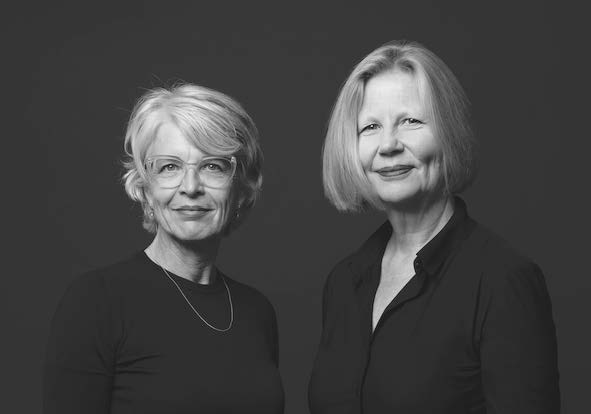Many business leaders assume they weren’t born with great creativity; but it’s not a natural talent, it’s a skill that can be learned, as Anne Mieke Eggenkamp and Fennemiek Gommer explain
You may be surprised by the research findings of INSEAD professor Nathan Furr, who looked at the balance between nature and nurture for both IQ (general intelligence) and CQ (creative intelligence).
The results show that while IQ is roughly 80 per cent genetic, only approximately 33 per cent of CQ is genetic. Creativity and innovative leadership are qualities we develop, not qualities we are born with.
The fact that only 33 per cent of creativity is in your genes also shows the importance of having a growth mindset, a concept that was first introduced by psychologist Carol Dweck from Stanford University. People with a growth mindset believe that they can improve their intelligence through effort and learning, in contrast to people with a fixed mindset who believe their intelligence is fixed and static.
When you have a growth mindset, you understand that not knowing or not being good at something can be a temporary state, so you’re not afraid to try again. Creative people share many of the same characteristics that are part of having a growth mindset, for instance curiosity, optimism, the courage to take risks and seeking opportunity. Entrepreneurs also share those same characteristics. When business leaders associate creativity with making art, they could be invited to develop their entrepreneurial mindset instead.
Leaders are learners
Companies need to exploit what is currently and explore what is not yet at the same time. Exploiting and exploring require different leaderships styles – executive leadership for exploiting and entrepreneurial leadership for exploring.
Executive leaders emphasise exploitation over exploration when setting their strategic priorities. Their focus is on getting things done and getting results. They excel at implementing the existing strategy and optimising the existing business. Executive leaders tend to prefer the left-brain thinking style, which is high on analytical and operational focus.
For entrepreneurial leaders, it’s the other way around. They emphasise exploration over exploitation. Their focus is on creating new business opportunities, rejuvenating the organisation by getting people to challenge the existing business model and stimulating innovation. Entrepreneurial leaders tend to favour their right-brain qualities.
The combination of both styles of leadership is called ambidextrous leadership. Ambidexterity means the ability to use both the right and left hand equally well; in leadership it refers to the ability to innovate (explore) while operating the existing business (exploit) effectively and efficiently. Ambidexterity invites you to embrace the concept of both/and, rather than either/or. The right balance between executive and entrepreneurial leadership depends on your business situation, but in general the need to focus more on exploring is increasing in a fast-changing world. While any company needs both types of abilities to be successful, we rarely meet leaders who are successful at doing both. Therefore, leaders should be encouraged to create ambidextrous teams.
The right balance between executive and entrepreneurial leadership might be a matter of changing the composition of your team, or designing leadership development programmes to help your team develop new mindsets and skills. It also requires a willingness to never stop learning. The best leaders are learners. They are open to incorporating new behaviours themselves and can mobilise others in their organization to do the same.
Creativity is a muscle
There is a common misconception that being creative is related to being an artist. You can be very creative and never touch a paintbrush or sing a note. Children are born creative but lose their creativity as they transition through life and into adulthood. Since the first industrial revolution, we have valued our left-brain competencies the most – both in education and business – as Ken Robinson so eloquently explains in the most watched TEDx Talk ever, How Schools Kill Creativity. While the focus on analysis and process helped advance the Western economy for a long time, it’s not enough in today’s world.
Traditionally, creative education is related to being artistic. We’re taught how to draw, but also how to self-judge that our drawing is not good enough. “I cannot draw” is one of the first things our clients say when we ask them to visualise what good looks like – even when we use other creative tools.
However, creativity is like a muscle: you can train it to regain your creative confidence and learn how to apply it. Like any muscle, creativity needs nourishment. What that looks like is different for everybody. You may get your inspiration from going to museums, theatres and movies, or from learning new things, reading, playing, cooking or inspiring conversations. It can be anything you enjoy that stimulates your curiosity and your senses. Ample nourishment is the foundation for the further development of your creative competencies.
Some creative habits to experiment with include the following:
- Developing intuition by taking short breaks in your business day, eg a walk or listening to music; pay attention to the ideas that come up
- Stimulate new ideas by changing networking habits; plan to meet new people beyond your usual business contacts
- Train empathy by being intentionally curious about others; limit how often you use “I” statements and talk about yourself
Like all creative journeys, it’s an iterative process. Start small, pick a creative habit that appeals to you and, once it has become second nature, you can try another one.
Anne Mieke Eggenkamp and Fennemiek Gommer are co-founders of Caracta Business Innovation and authors of Boardroom Creativity.




